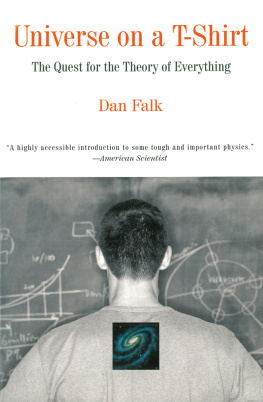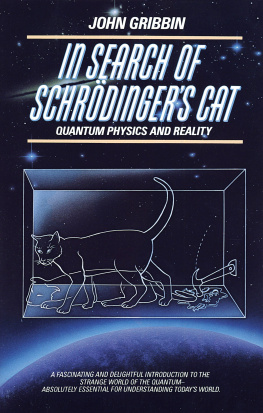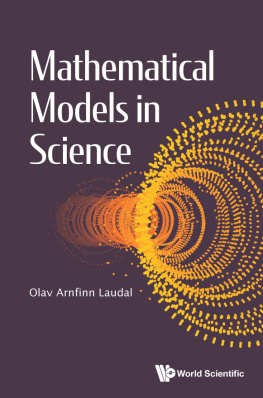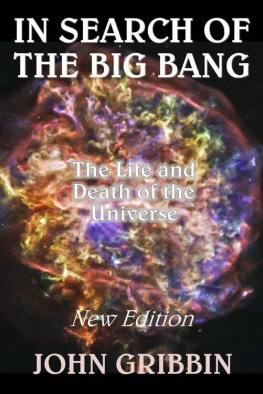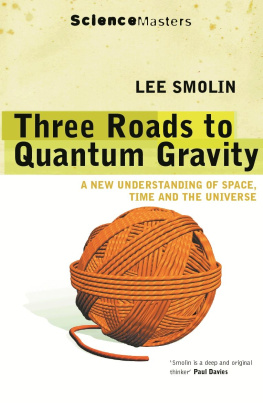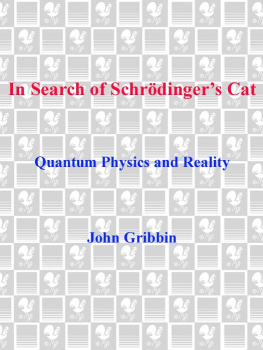13.8
THE QUEST TO FIND THE TRUE
AGE OF THE UNIVERSE AND THE
THEORY OF EVERYTHING
JOHN GRIBBIN

First published in the United States in 2016 by Yale University Press.
First published in the United Kingdom in 2015 by Icon Books Ltd.
Text copyright 2015 John and Mary Gribbin.
All rights reserved.
This book may not be reproduced, in whole or in part, including illustrations, in any form (beyond that copying permitted by Sections 107 and 108 of the U.S. Copyright Law and except by reviewers for the public press), without written permission from the publishers.
Yale University Press books may be purchased in quantity for educational, business, or promotional use. For information, please e-mail (U.K. office).
Typeset in Dante by Marie Doherty.
Printed in the United States of America.
Library of Congress Control Number: 2015951744
ISBN: 978-0-300-21827-5 (hardcover: alk. paper)
A catalogue record for this book is available from the British Library.
This paper meets the requirements of ANSI/NISO Z39.48-1992
(Permanence of Paper).
10 9 8 7 6 5 4 3 2 1
Contents
About the Author
J OHN G RIBBIN was born in 1946 in Maidstone, Kent. He studied physics at the University of Sussex and went on to complete an MSc in astronomy at the same university before moving to the Institute of Astronomy in Cambridge, to work for his PhD.
After working for the journals Nature and New Scientist, he has concentrated chiefly on writing books on everything from the Universe and the Multiverse to the history of science. His books have received science-writing awards in the UK and the US. His biographical subjects include Albert Einstein, Erwin Schrodinger, Stephen Hawking, Richard Feynman, Galileo, Buddy Holly and James Lovelock.
Since 1993, Gribbin has been a Visiting Fellow in Astronomy at the University of Sussex.
Acknowledgements
T he University of Sussex provided me with a base to work from, and the astronomy group there provided many stimulating discussions on various aspects of astronomy. Beyond Sussex, Virginia Trimble of the University of California, Irvine kept us straight on history, and Franois Boucher of the Institut dAstrophysique Paris kept us up to date on the Planck satellite discoveries. I am also grateful to the Alfred C. Munger Foundation for continued financial support.
List of Illustrations
AIP Emilio Segre Visual Archives, Physics Today Collection
AIP Emilio Segre Visual Archives
AIP Emilio Segre Visual Archives, Locanthi Collection
AIP Emilio Segre Visual Archives, Shapley Collection
Photo by Hans Petersen, Novdisk Pressefoto A/S, courtesy AIP Emilio Segre Visual Archives, gift of Kaj Aage Strand
AIP Emilio Segre Visual Archives, Physics Today Collection
AIP Emilio Segre Visual Archives, W.F. Meggers Collection
AIP Emilio Segre Visual Archives, William G. Myers Collection
AIP Emilio Segre Visual Archives, Segre Collection
Photo by Ramsey and Muspratt, courtesy AIP Emilio Segre Visual Archives, Physics Today Collection
AIP Emilio Segre Visual Archives, Physics Today Collection
12. Solvay Conference, June 1958
Seated lr: W.H. McCrea, J.H. Oort, G. Lematre, C.J. Gorter, W. Pauli, Sir W.L. Bragg, J.R. Oppenheimer, C. Moller, H. Shapley, O. Heckmann; Standing, lr: O.B. Klein, W.W. Morgan, F. Hoyle(back), B.V. Kukaskin, V.A. Ambarzumian (front), H.C. van de Hulst (back), M. Fierz, A.R. Sandage (back), W. Baade, E. Schatzman (front), J.A. Wheeler (back), H. Bondi, T. Gold, H. Zanstra (back), L. Rosenfeld, P. Ledoux (back), A.C.B. Lovell, J. Geheniau
Photograph by G. Coopmans, Institut International de Physique Solvay, courtesy AIP Emilio Segre Visual Archives, Leon Brillouin
Leningrad Physico-Technical Institute, courtesy AIP Emilio Segre Visual Archives
Science Photo Library
Museum Boerhaave, Leiden
AIP Emilio Segre Visual Archives
Photograph by Margaret Harwood, courtesy AIP Emilio Segre Visual Archives
The Hale Observatories, courtesy AIP Emilio Segre Visual Archives
Photograph by Edison R. Hoge, Hale Observatories, courtesy AIP Emilio Segre Visual Archives
AIP Emilio Segre Visual Archives, Physics Today Collection
Mt. Wilson-Palomar Observatories photo, courtesy AIP Emilio Segre Visual Archives, Physics Today Collection
HUB 1042 (7), Edwin Hubble Papers, The Huntington Library, San Marino, California
Courtesy of The Observatories of the Carnegie Institution of Washington
Physics Department, Imperial College/ Science Photo Library
ESO (European Southern Observatory)
Bennett, Jeffrey O.; Donahue, Megan O.; Schneider, Nicholas; Voit, Mark, The Cosmic Perspective, 4th 2006. Printed and electronically reproduced by permission of Pearson Education, Inc., New York, New York
28. Hubbles law
The velocity of galaxies (v) is proportional to the distance to the galaxies (d). The two values are related by the Hubble constant (H).
ESO/J. Emerson/VISTA. Acknowledgment: Cambridge Astronomical Survey Unit
Tony and Daphne Hallas/Science Photo Library
ESO
32. The echo of the Big Bang
John C. Mather shows some of the earliest data from the COBE spacecraft (the COBE blackbody curve) on 6 Oct. 2006 at NASA Headquarters in Washington, DC.
NASA/Bill Ingalls
Mark Garlick/Science Photo Library
34. Cosmic microwave background seen by Planck
The map shows tiny temperature fluctuations that correspond to regions of slightly different densities at very early times, representing the seeds of all future structure, including the galaxies of today.
ESA and the Planck Collaboration
35. Planck power spectrum of the cosmic microwave background
The dots are measurements made by Planck. The wiggly line represents the predictions of the LambdaCDM model of the Universe.
ESA and the Planck Collaboration
Introduction
The Most Important Fact
T he Universe began. The origin of everything we see about us stars, planets, galaxies, people can be traced back to a definite moment in time, 13.8 billion years ago. The ultimate question that baffled philosophers, theologians and scientists for millennia has been answered in our lifetime. It has taken almost exactly half a century, starting in the mid-1960s with the discovery of the cosmic microwave background radiation, for the idea of a Universe of finite age to go from being a plausible hypothesis but no more plausible than the idea of an eternal, infinite Universe to being established as fact. The age of the Universe has been measured with exquisite precision using data from space observatories such as Planck. But accounts of this scientific triumph often overlook the fact that there is a second leg to the journey. The existence of this second leg is what makes the discovery of the beginning so compelling.
The most important thing we know in science is that our theory of the very small quantum theory agrees precisely with our theory of the very large cosmology, aka the general theory of relativity. This is in spite of the fact that the two theories were developed entirely independently and that nobody has been able to unify these two great theories into one package, quantum gravity. But the fact that they separately give the right answers to the same question tells us that there is something fundamentally correct about the whole of physics and, indeed, the whole scientific enterprise. It works.
Next page

